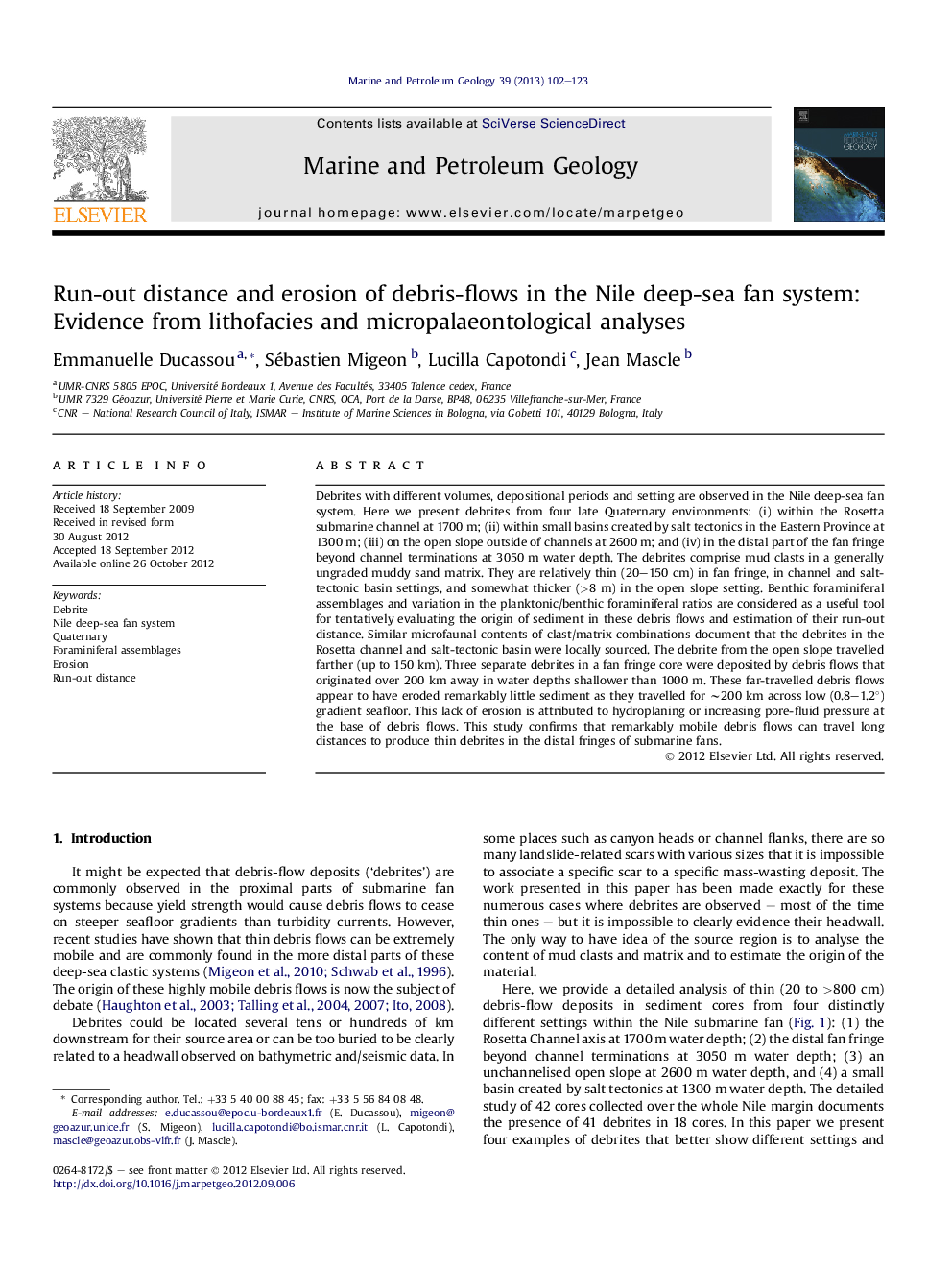| کد مقاله | کد نشریه | سال انتشار | مقاله انگلیسی | نسخه تمام متن |
|---|---|---|---|---|
| 4695895 | 1351641 | 2013 | 22 صفحه PDF | دانلود رایگان |
Debrites with different volumes, depositional periods and setting are observed in the Nile deep-sea fan system. Here we present debrites from four late Quaternary environments: (i) within the Rosetta submarine channel at 1700 m; (ii) within small basins created by salt tectonics in the Eastern Province at 1300 m; (iii) on the open slope outside of channels at 2600 m; and (iv) in the distal part of the fan fringe beyond channel terminations at 3050 m water depth. The debrites comprise mud clasts in a generally ungraded muddy sand matrix. They are relatively thin (20–150 cm) in fan fringe, in channel and salt-tectonic basin settings, and somewhat thicker (>8 m) in the open slope setting. Benthic foraminiferal assemblages and variation in the planktonic/benthic foraminiferal ratios are considered as a useful tool for tentatively evaluating the origin of sediment in these debris flows and estimation of their run-out distance. Similar microfaunal contents of clast/matrix combinations document that the debrites in the Rosetta channel and salt-tectonic basin were locally sourced. The debrite from the open slope travelled farther (up to 150 km). Three separate debrites in a fan fringe core were deposited by debris flows that originated over 200 km away in water depths shallower than 1000 m. These far-travelled debris flows appear to have eroded remarkably little sediment as they travelled for ∼200 km across low (0.8–1.2°) gradient seafloor. This lack of erosion is attributed to hydroplaning or increasing pore-fluid pressure at the base of debris flows. This study confirms that remarkably mobile debris flows can travel long distances to produce thin debrites in the distal fringes of submarine fans.
► Biogenic content of clasts and matrix from debrites as source and erosion markers.
► Debrites from different settings have various run-out distances.
► Channels favour non-erosive flows.
► Debris flows can travel long distances to produce thin debrites in distal lobes.
Journal: Marine and Petroleum Geology - Volume 39, Issue 1, January 2013, Pages 102–123
